As the paid social manager for your company, you’re responsible for running successful Facebook ad campaigns and reaching ambitious digital marketing goals.
It’s not enough to know how to build killer campaigns or target the right audiences. You also have to be an expert at optimizing your Facebook ad quality ranking.
TL;DR
We’ll go over why Facebook ad quality ranking is so important and how to improve yours so you can get better results from your paid campaigns. An ad's expected CVR influences its performance and ranking. Higher rankings lead to lower ad costs and better performance. How do you improve rankings? By the end of the page you'll know 26 ways to improve rank from high-quality creative, audience targeting, and engagement strategies to the frequency that avoids ad fatigue.
Get brand new Facebook ad strategies straight to your inbox every week. 23,739 people already are!
What are the factors that determine Facebook’s ad quality ranking?
Ad quality ranking is a measurement that reveals how your ads are performing compared to other ads targeting the same audience.
But it’s about more than just a surface-level competition. This measurement has a real impact on your campaign performance because
- ads with high ad quality rankings can end up with lower ad costs and improved delivery
- ads with low quality rankings can help you identify areas for improvement
Rather than displaying as a single metric, Facebook divides ad quality relevance (also known as ad quality relevance diagnostics) into three new metrics:
- Quality Ranking reflects how the perceived quality of your ad compares to that of ads competing for the same audience.
- Engagement Rate Ranking indicates how your ad’s expected engagement rate compares to ads competing for the same audience.
- Conversion Rate Ranking reveals how your ad’s expected conversion rate compares to ads with the same optimization goal competing for the same audience.
What scores can you expect from your Facebook ad quality ranking? Take a look at the chart below:

Note that Meta states: “It’s more impactful to move a ranking from low to average than it is to move a ranking from average to above average, so focus on improving low rankings rather than on improving average rankings.”
- Open Ads Manager and select the “Ads” tab.
- Click the “Columns” button and select “Customize Columns” at the bottom of the menu.
- Type “ranking” into the search bar to find all three metrics quickly.
- Check “Ad quality ranking,” “Engagement rate ranking,” and “Conversion rate ranking.”
- Select “Save as Preset” so you can view these metrics any time you check Ads Manager.
- Click “Apply” to view all three ad quality ranking metrics for your ads.
What about Facebook's relevance score?
Ad quality ranking replaces the relevance score, which Facebook introduced in 2015 and has since retired. When it was active, relevance score reflected how good of a fit your ad was for your target audience—which affected cost and delivery. Now, an ad's perceived quality plays a crucial role in determining its quality ranking against other ads targeting the same audience.
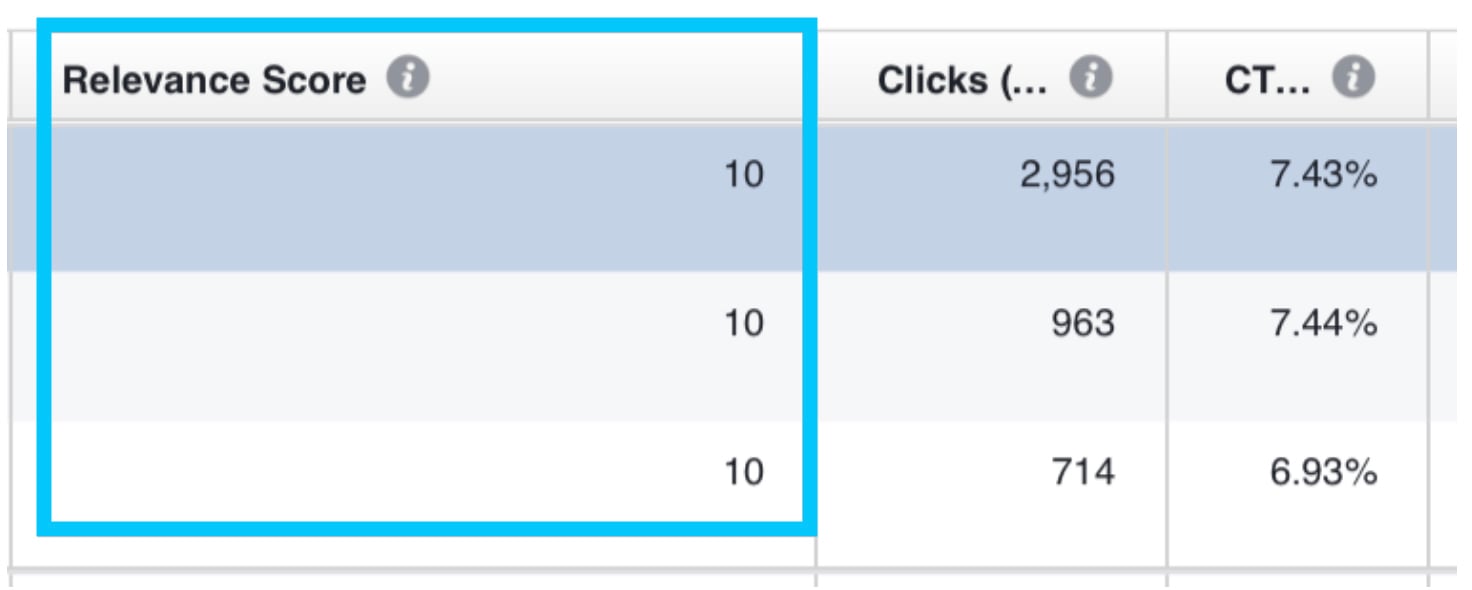
Relevance score was a single measurement on a scale from 1–10. Ads with a relevance score of 1–3 were considered irrelevant to your audience, while ads with scores of 8–10 were considered highly relevant.
All three elements of this metric—quality, engagement rate, and conversion rate—can have scores of above average, average, or below average.
But what does that really mean? Here’s how those rankings translate to a quantifiable measurement:
- above average (above the 55th percentile)
- average (35th to 55th percentile)
- below average (lowest 35% of ads)
- below average (lowest 20% of ads)
- below average (lowest 10% of ads)
In other words, if your ad has the lowest possible ranking, 90% of ads competing against yours are considered higher quality. That means it’s probably time to make some improvements.
Improving your Facebook ad quality ranking comes down to three main things. You have to
- target the right audience (people who fit your ideal customer profile or who have engaged with your business before)
- offer something of value to your audience (such as a helpful resource, a great deal, or a solution to a persistent problem)
- make your ads eye-catching and attractive, and get both the creative and the copy just right
Those are the three main levers you want to play with. But besides those main governing principles, you still need some in-the-weeds methods.
Luckily, we came up with 26 of them below. 🤩
Ready to move your ad quality rankings to the head of the class?
Note that many of the recommendations below are designed to benefit your quality ranking and engagement rate ranking.
Conversion rate ranking can sometimes improve in tandem with quality and engagement rate ranking improvements. But conversion rates rely on a lot of factors—from your bid strategy to how you structure your campaigns.
Ad fatigue happens when people in your target audience have seen your Facebook ad so many consecutive times that they grow tired of them. Maybe they even get annoyed.
Once ad fatigue kicks in, several things can happen:
- People stop noticing your Facebook ads, which can lead to lower engagement.
- People stop clicking on your Facebook ads, which can decrease conversions.
- If people get annoyed enough, they’ll hide your ad, making your ranking plummet.
- Your campaign costs skyrocket since your ads aren’t generating results consistently.
The easiest way to predict ad fatigue is to monitor your Facebook ad frequency, or how many times someone has seen your ad on average.
To check this metric, open Ads Manager, select a campaign, and choose the “Delivery” preset from the columns menu.
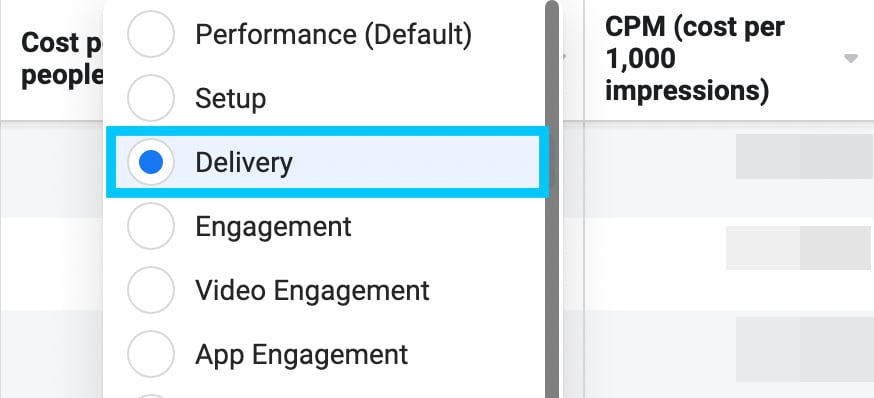
You can view frequency on a campaign, ad set, or ad level.

For most campaigns, aim to keep Facebook ad frequency under 2–3. When working with Facebook remarketing campaigns, however, you can let the ad frequency go higher.
But keep in mind that just because an ad is relevant, it doesn’t mean your audience needs to see it 20 times.
2. Introduce new ads to the mix frequently
Another way to keep your Facebook ad quality ranking up is to introduce engaging new ads and offers to your Facebook campaigns constantly.
That's also one of the best Facebook ad strategies for fighting that ad fatigue we just mentioned.
For example, social media scheduling dashboard Later has tested multiple creatives to keep its audience engaged.
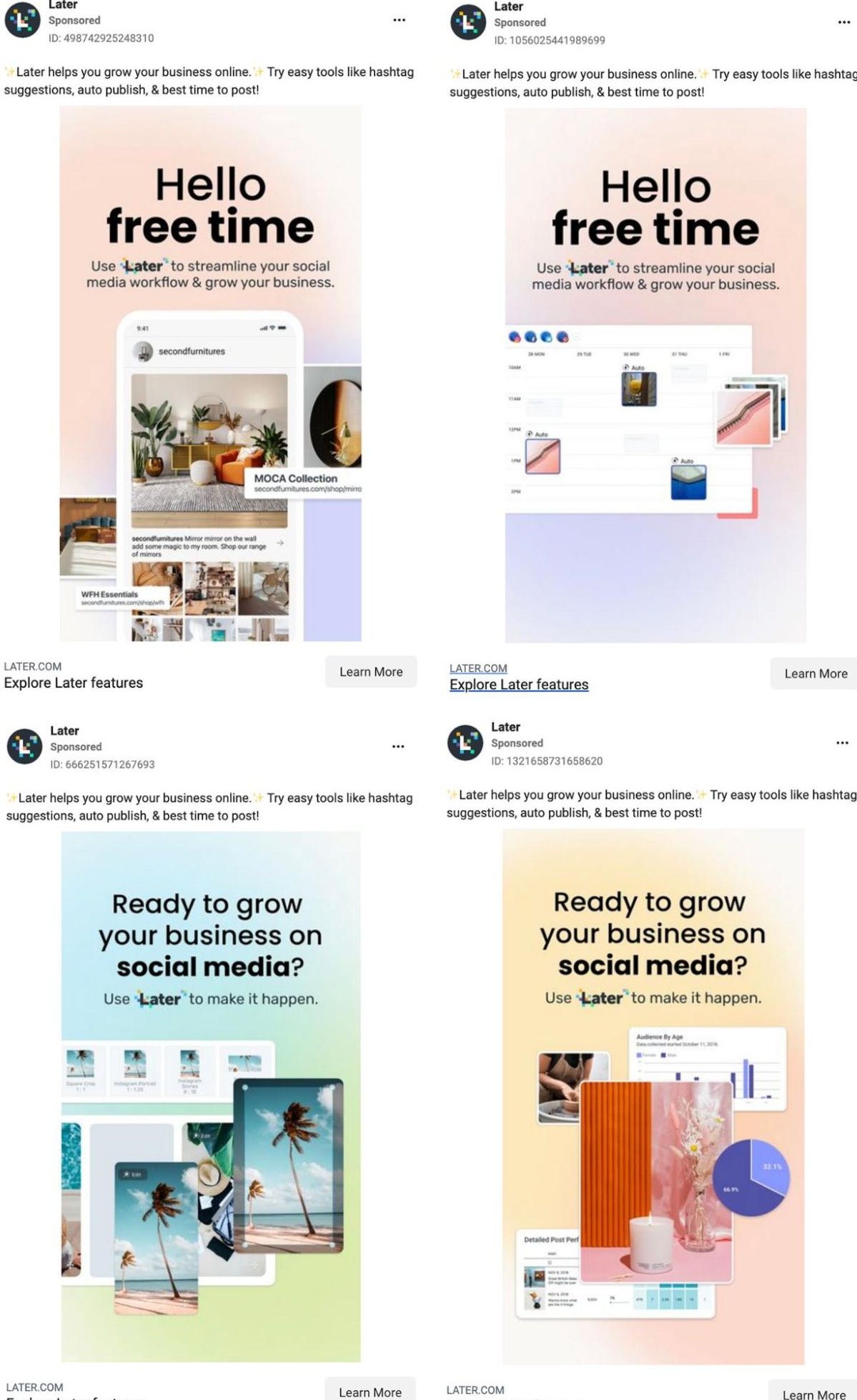
You can add new ads to existing Facebook campaigns, especially if you've already had success with the campaign or ad set. By adding variations, you can discover what resonates most with your audience.
Make it a habit to develop a couple of new designs or offers at least every couple of months to keep your ad quality ranking high.
3. Facebook Power 5
Meta considers the Facebook Power 5 method a best practice for direct response advertisers. This playbook highlights five tactics that can dramatically improve your Facebook ad performance, including
- account simplification
- campaign budget optimization
- automatic placements
- auto advanced matching
- dynamic ads
Why do these tactics work so well? They leverage the machine learning and automation elements of the Facebook algorithm.
As a result, they can significantly reduce your CPM (cost per 1,000 impressions). That can reduce your CPC (cost-per-click), which helps reduce your CPA (cost per action), too.
At KlientBoost, we've extensively tested and widely adopted the Facebook Power 5 method. Here are three of our biggest takeaways:
- Facebook Power 5 drives better results for our clients by reducing inefficiency and lowering CPM.
- By trusting the algorithm and simplifying our approach, we can decrease manual maintenance and save hours every week.
- We have more time and resources to look at the bigger picture and find what moves the needle. Nine times out of 10, we find that creatives make the biggest impact.
Ultimately, each aspect of the Power 5 can affect ad quality ranking in key ways.
Dynamic ads and automatic placements improve relevance and ad delivery, increasing ad quality ranking and engagement rate ranking. In addition, using CBO can increase conversions, which can improve conversion rate ranking.
4. Create a variety of offers
When you create a wide range of offers, you can see which one your target audience responds to best. The ad's perceived quality compared to others targeting the same audience influences engagement. By adding variety, you allow them to become more engaged with your business and excited about your offers.
Try these offer types to boost engagement and get better quality rankings:
- Quizzes: Create a quiz lead form in Facebook to collect client details in a fun and interactive way. At KlientBoost, we once created a quiz to show prospects how valuable our services would be.
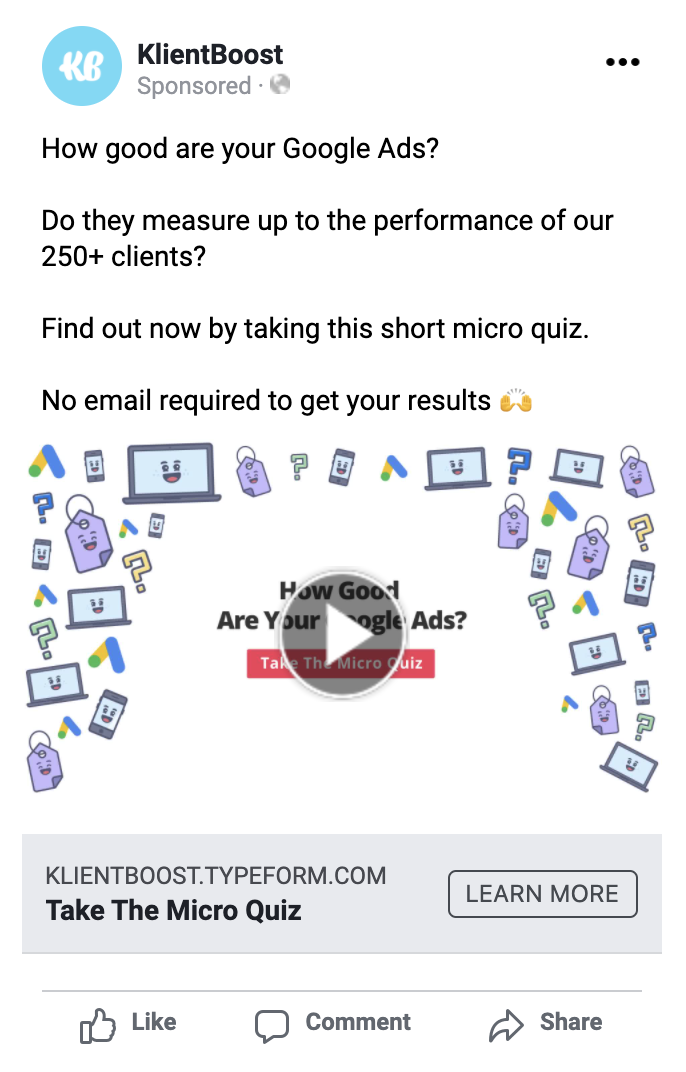
Giveaways: When it comes to getting more leads on Facebook, giveaways are a great way to draw people in. When you incentivize prospects, you give them a compelling reason to convert.
- eBooks: Lead magnets like eBooks are incredibly valuable resources for your business. As gated content, they're ideal for getting potential customers to join your email list or fill out lead forms.
5. Understand your target audience
When it comes to PPC advertising platforms, Facebook offers some of the most granular options for reaching the right target audience.
From detailed interest targeting to lookalike audiences to custom audiences, Facebook gives you plenty of opportunities to reach new audiences and people already familiar with your brand.
That's a good thing—because finding the right Facebook target audience is paramount to getting high ad quality ranking scores.
How can you target the right audience? According to Content Marketing Institute, you should define your by thinking about these nine essential aspects:
- day in the life
- objectives
- problems
- orientation
- obstacles
- questions
- preferences
- keywords and phrases
- engagement scenarios
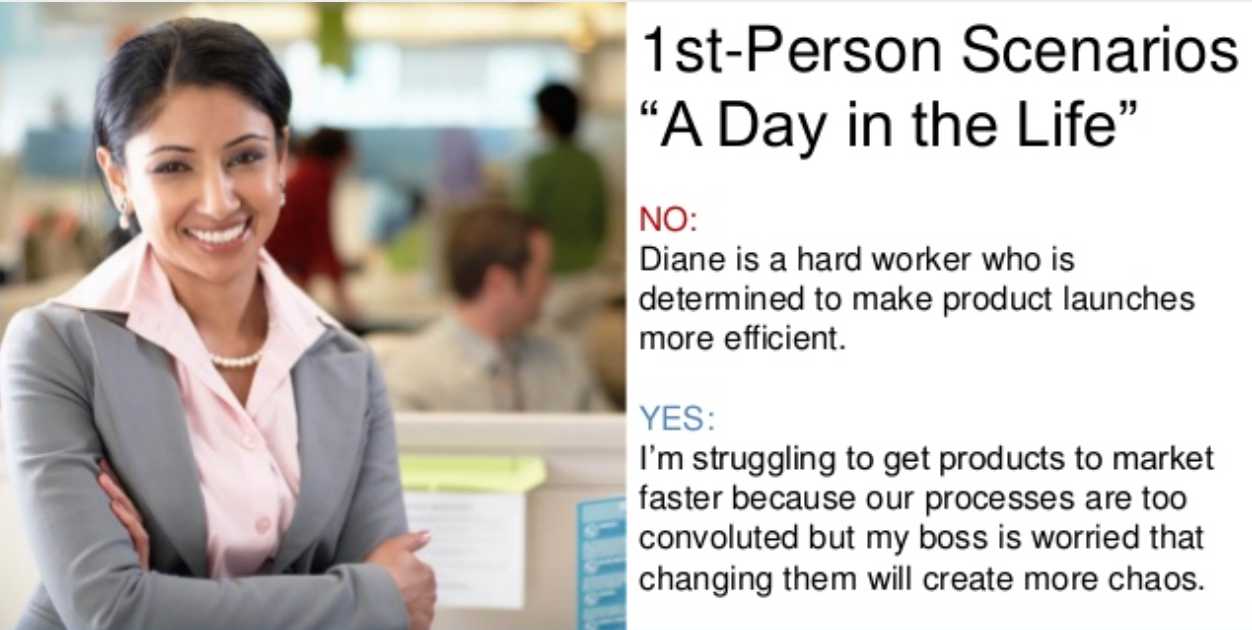
Once you can communicate your potential buyers' real-life obstacles and interests, you'll find it easier to connect with new audiences on Facebook.
6. Create advanced Facebook audiences
When creating new Facebook marketing audiences, don’t limit yourself to detailed interest targeting. These interest-based audiences are easy to create, but they aren’t the most efficient.
Targeting enormous colder audiences (from 10 million to the billions) is a surefire recipe for low ad quality ranking scores.
Fortunately, there’s no need to go down that path.
With lookalike and custom audiences, you can target relevant and reasonably-sized groups at every stage of the funnel. Using these audiences, you can set up efficient remarketing campaigns and successful brand awareness campaigns that generate high ad quality ranking scores according to Facebook's ad quality ranking system.
7. Segment your target audiences
When you know how to create advanced Facebook audiences, you gain the ability to build high-ROI (return on investment) audience segments.
And better audience segmentation leads to increased relevance (which, yep, can improve ad quality ranking).
Think of it as building your audiences out of small Lego blocks instead of full-sized bricks.
For example, instead of promoting a blog article on productivity to a large saved audience of people with a general interest in productivity, you could advertise the article to existing readers who have clicked on related articles in the past.
You can also use the mille-feuille Facebook ad strategy to create segmented audiences.
Mille-feuille is a dessert that translates to “a thousand layers” in English. Here's how the mille-feuille tactic works:
- create a Facebook custom audience
- add additional targeting criteria by creating a saved audience that includes your custom audience
Advanced Facebook targeting lets you segment your ad audiences into smaller groups so you can target them with high-quality ads and relevant offers.
8. Target people who have already engaged with your ads
If your goal is to improve your Facebook ad quality ranking score, it would make sense to advertise to people who are likely to engage with your ads.
As it happens, you can do exactly that. All you have to do is create a Facebook retargeting audience of people who previously engaged with your Facebook posts or ads.
For example, you could reach people who
- visited your Facebook page
- engaged with posts or ads
- clicked on a call-to-action (CTA) button
- sent a message to your page
You can also retarget people who engaged with your Facebook events, your Instagram account, or the products you've listed on Facebook. If you run lead ads, you can even retarget people who opened or submitted your lead forms.
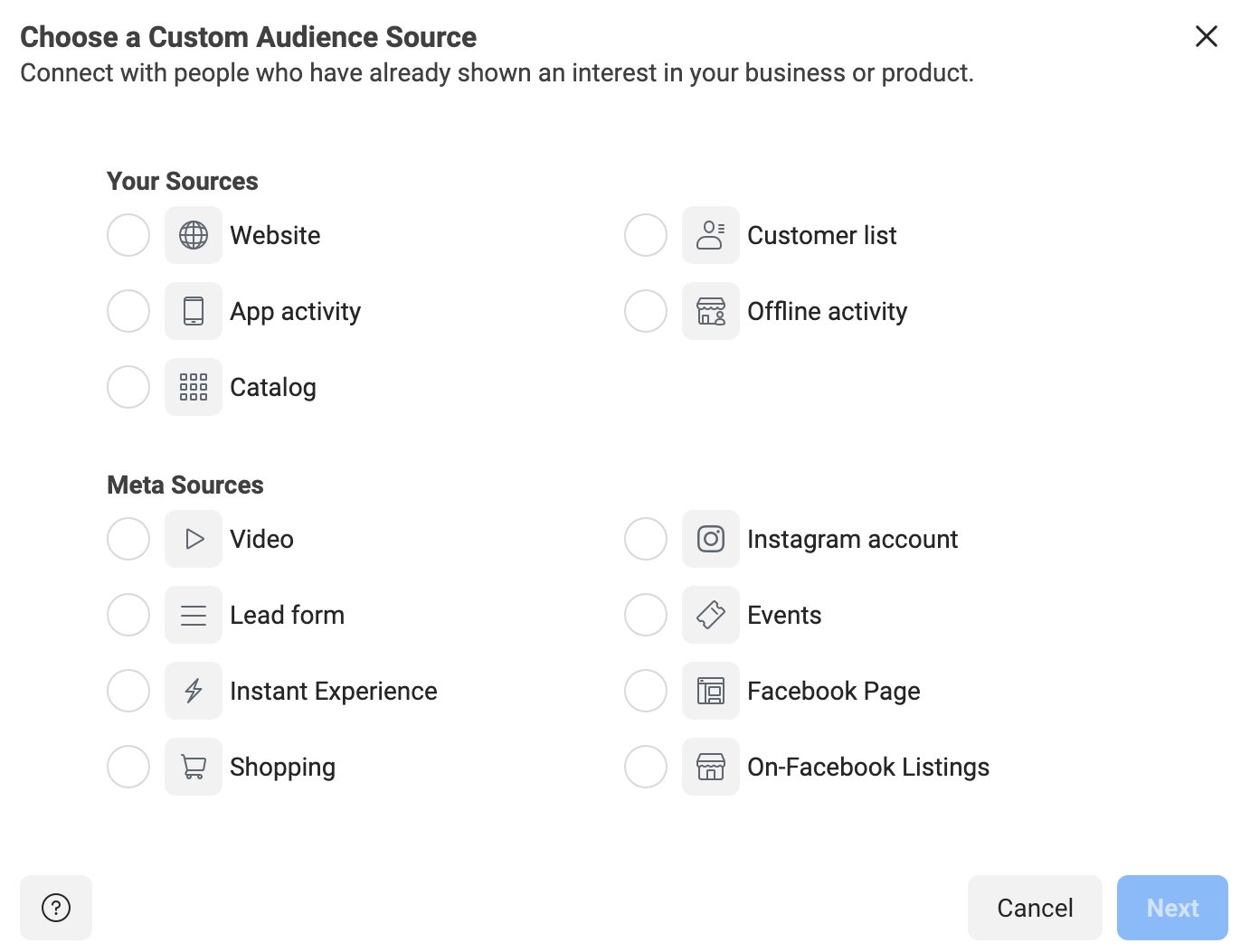
If you plan to remarket to engagement-based custom audiences, make sure they're large enough. As a general rule, custom audiences should include at least 2,000 people.
9. Exclude converters from your target audience
If you keep showing your Facebook ad to a person who's already converted, they might get annoyed. They might even hit the “Hide ad” button to get rid of it.
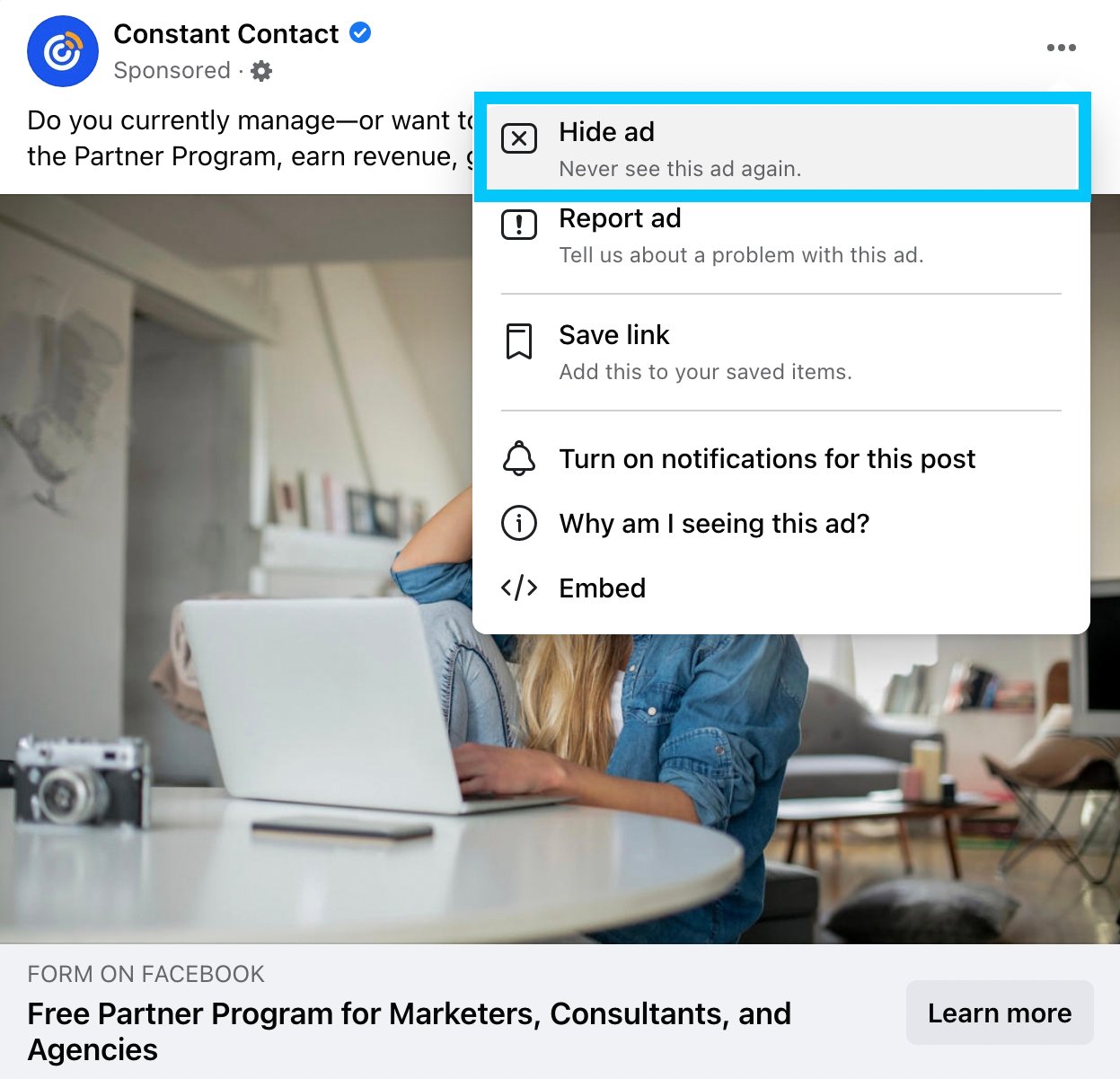
Even worse, they might indicate that the ad is irrelevant, repetitive, or already purchased.
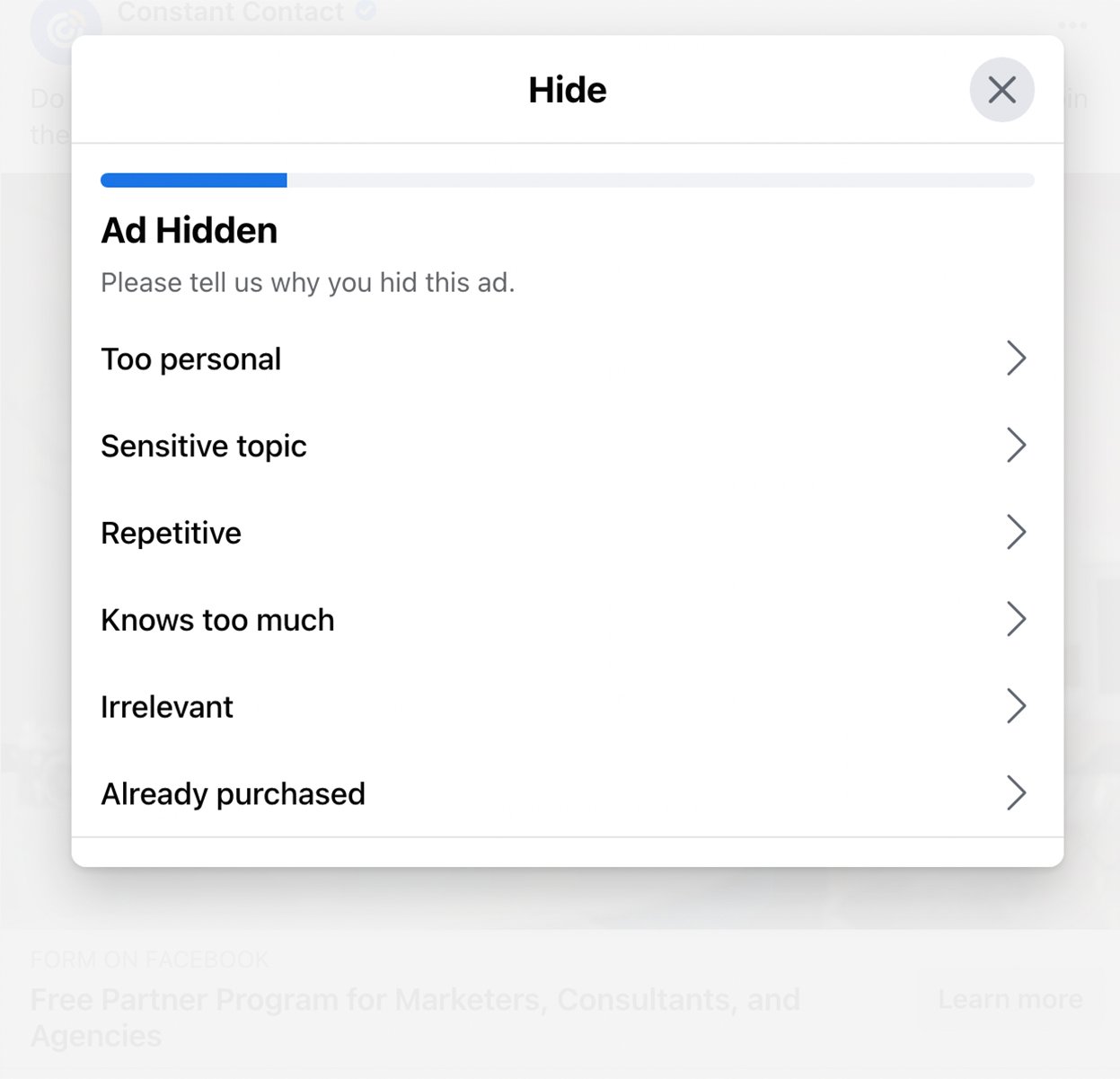
That's likely to decrease (not increase) your ad quality ranking score. Naturally, accumulating negative feedback can damage your Facebook ad performance.
The easiest way to keep this worst-case scenario from happening is to exclude converters from your ad set's audience
For example, say you're promoting a free eBook. After someone downloads it, you can exclude them from the audience.

Here's how to exclude past converters from your Facebook audiences:
- Create a Facebook custom audience of people who have completed one of your Facebook events (e.g., Purchase or Subscribe).
- Set up a new target audience and use the Exclude option to avoid targeting your audience of past converters.
Once you've excluded converters from your Facebook ads audience, all of your budget will go toward reaching the people who haven't yet converted. That can help make your ads more relevant and improve ad quality ranking.
10. A/B test your way to the right audience
If you're not sure about the perfect Facebook target audience for your ad set, consider running an A/B test.
When you test Facebook ads, you can experiment with different audiences at the ad set level.
For example, AdEspresso did an experiment to test three lookalike audiences of varying sizes:
- 1% of people in the U.S.
- 5% of people in the U.S.
- 10% of people in the U.S.

After analyzing each campaign's results, here's what they found:
- 1% lookalike audience cost-per-lead: $3.75
- 5% lookalike audience cost-per-lead: $4.16
- 10% lookalike audience cost-per-lead: $6.36
As you can see, testing variations of the same Facebook audience type can result in different CTRs (click-through rates) and conversion rates—which can affect your ad quality ranking.
Just remember that you have to sacrifice upstream metrics (ad quality ranking) for the sake of better downstream metrics (profit, conversion cost, etc.). In other words, sometimes ad quality ranking isn't the ultimate metric for ads.
Best practices for A/B testing multiple Facebook audiences
- Create at least two target audiences with little or no audience overlap.
- Use the Exclude feature to avoid targeting specific custom audiences.
- Keep each test audience large enough to deliver sufficient results. An audience of 2,000 might not be the best idea to split test against an audience of 400,000.
- Test with different audience types, including detailed interest targeting, custom audiences, and lookalike audiences.
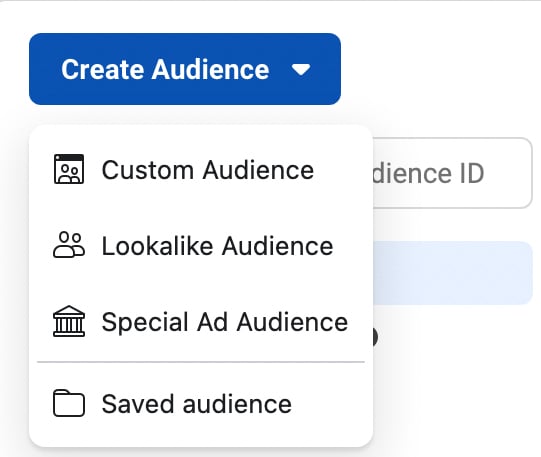
When evaluating the ROI of multiple Facebook audiences, look at the cost-per-conversion first. After that, proceed to additional metrics like ad quality ranking, CPC, and CTR.
The key to a higher Facebook ad quality ranking is creating and delivering ads that resonate with your audiences.
But what's the key to creating Facebook ads that resonate?
It all starts with understanding your Facebook marketing funnel and the pay-per-click (PPC) channel temperature
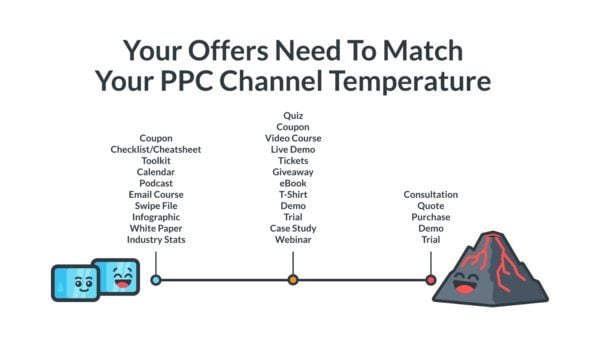
When targeting cold audiences, offer low-commitment ads and content such as guides, eBooks, or blog articles.
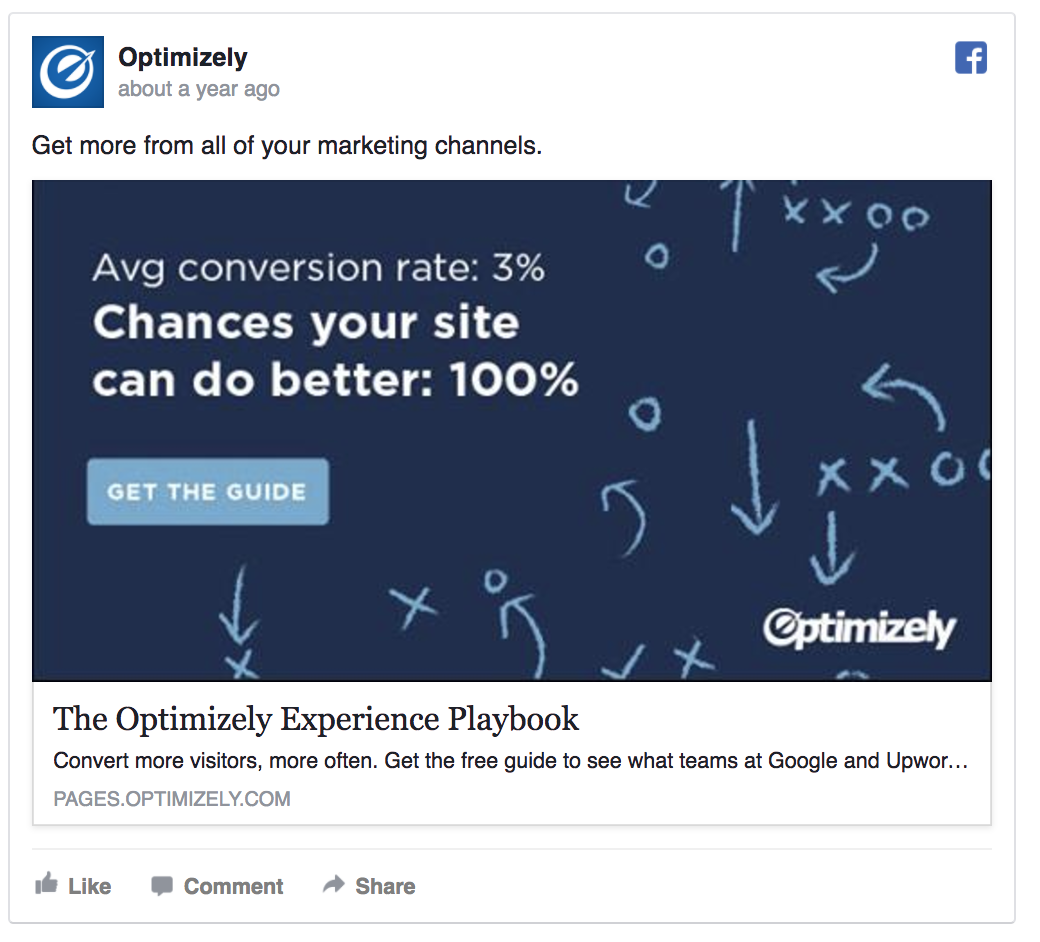
If you're retargeting people who have already shown interest in your offer (i.e., warm audiences), you can address them with more sales-focused offers.
12. Improve your Facebook ads' UVP
If you want someone to click on your Facebook ad, you need to give them a good reason to do so.
After all, they're investing both time and attention by clicking your ad.
This is where your unique value proposition (UVP) enters the picture. Your UVP should emphasize the benefits of your product or service that are relevant to the target audience.
If someone finds your offer interesting, they'll click on your Facebook ad to find out more. You'll also have fewer people ignoring or hiding your ad, which can improve your ad quality ranking.
More clicks can also improve the perceived likelihood of getting clicks, improving your engagement rate ranking.
13. Write irresistible headlines
Your Facebook ad headline is one of the first elements that catch people's attention.
Headlines can have a huge effect on your ads' CTR. And the more engagements and conversions your ad generates, the higher its ad quality ranking is likely to be.
So, spend the time to craft great headlines. You want to stand out and stay on brand, and that means tinkering until you have something just right.
Just make sure to avoid clickbait and engagement bait in your efforts to get your audience's attention.
Write headlines with odd numbers. Outbrain tells us that headlines with odd numbers perform better than headlines with even numbers. (Oh, how the internet never ceases to amaze us.)
When writing Facebook ad copy, always think about your customers. What's relevant to them?
For example, Google's Facebook ad makes you the main character.
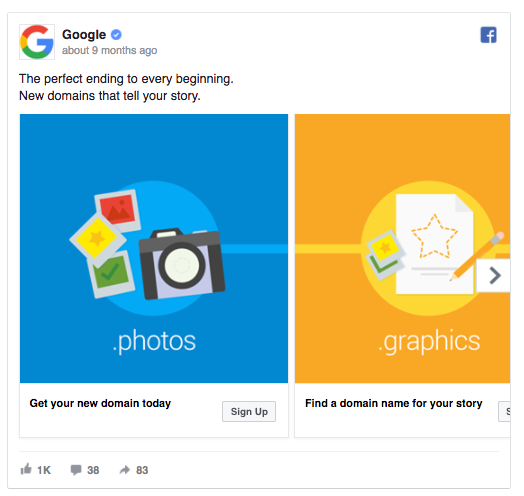
You don't need to take this suggestion quite so literally. But you should always consider what will make your target audience interested in the offer.
After all, the more positively people respond to your Facebook ad, the more you can improve your ad quality ranking.
Here's another example by Metrilo, promising to help coffee store owners sell more:
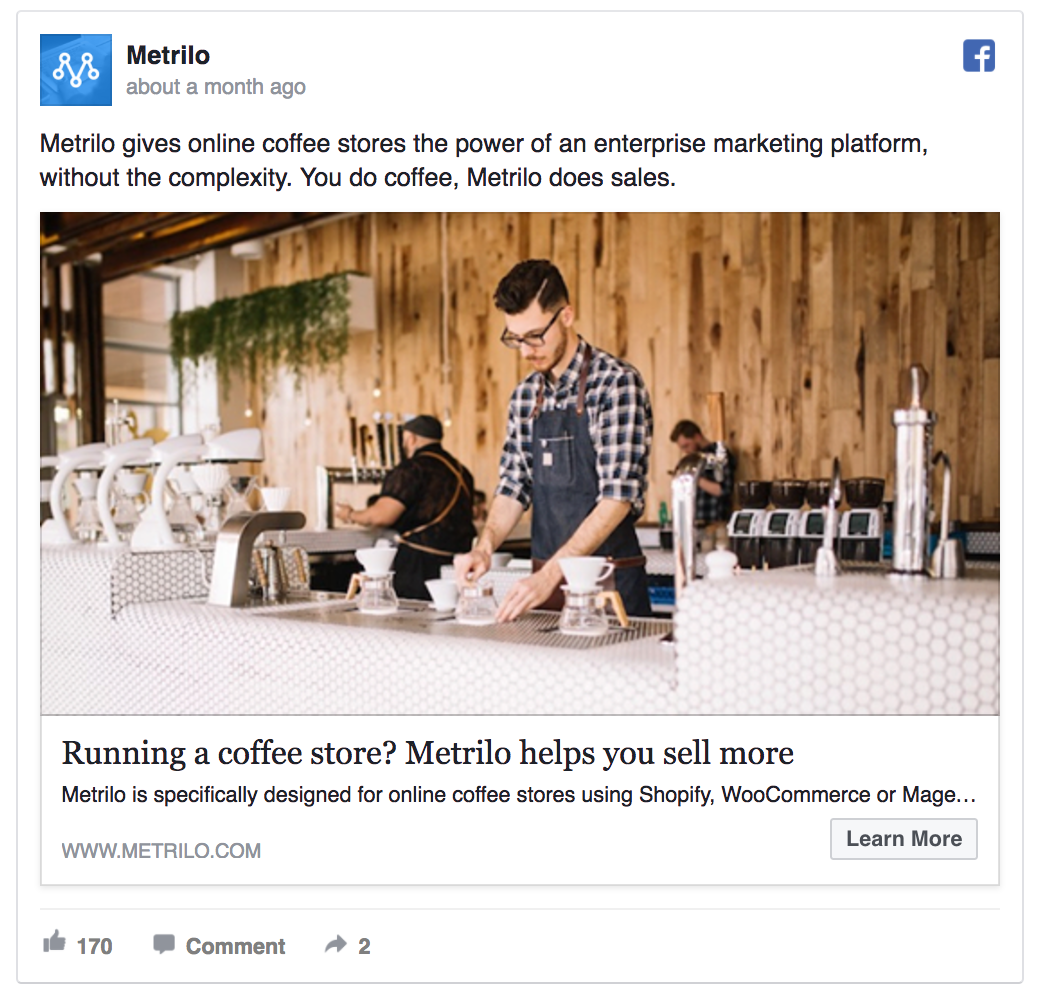
Think about the greatest problems and biggest goals of your potential customers. Then show how your product can make their day, streamline their work, or improve their lives.
Using action verbs in your Facebook ad copy can help you engage a larger percentage of your audience, which can increase your engagement rate ranking.
The decision-making part of your brain also happens to be the most primitive. In other words, most people react to simple, actionable words.
That's why you should test including action words such as
- try
- get
- start
- gain
- read
- save
For instance, Blue Bottle Coffee‘s Facebook ad says “Try It For Free” in the headline. The rest of the text supports that CTA by explaining the product's UVP.
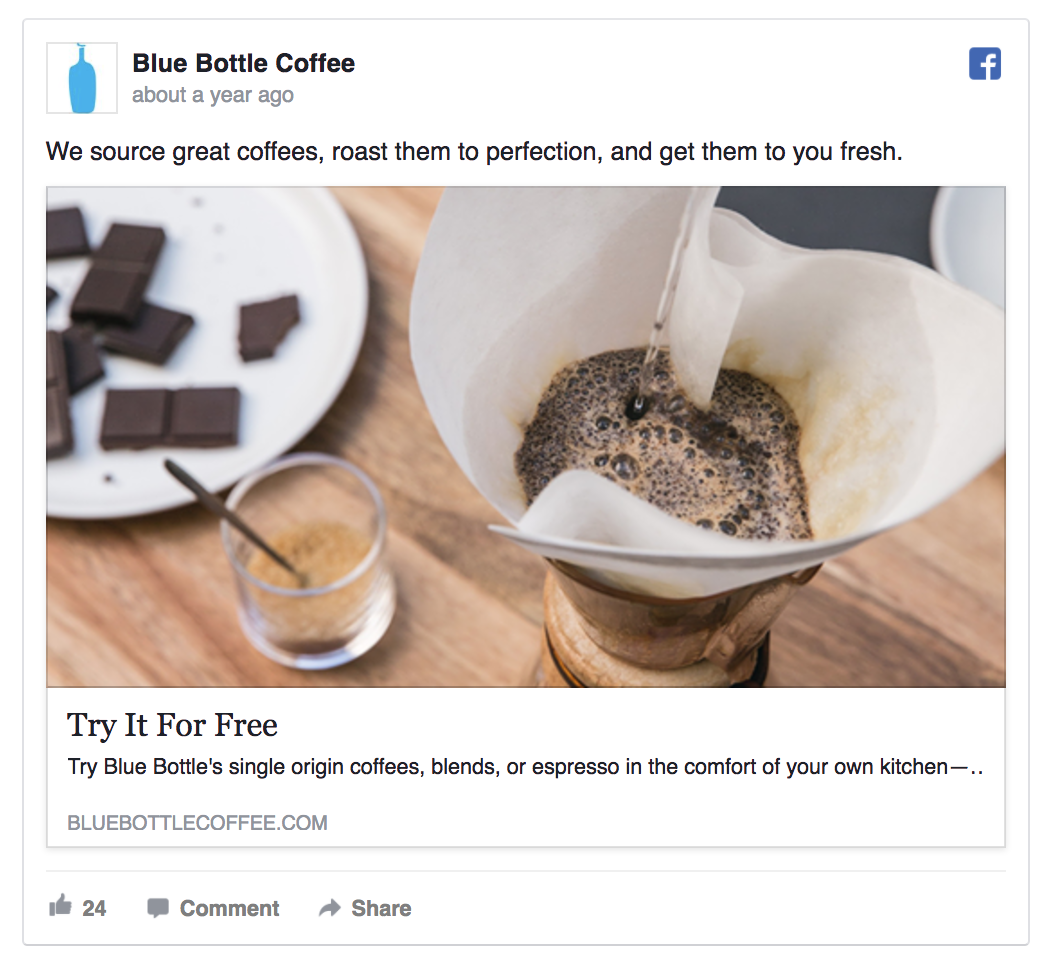
Looking for more action word ideas? Buffer put together a massive list of 189 powerful words that can help you write high-converting Facebook ad copy.
16. Play with a sense of urgency
It's important to convert people quickly while they're still excited about your offer.
To add a touch of urgency to your Facebook ad copy, try these hacks:
- Define clear time frames (e.g., “Today only” or “Offer ends on Saturday”).
- Offer a significant discount (e.g., “Get 60% off today”).
- Keep your offer simple and brief.
- Place your offer in the ad's headline or in the image.
For example, HubSpot offered a limited-time 20% discount on the company's growth stack. The entire ad below focuses on creating urgency. The copy even starts with the words, “Don't miss out…”
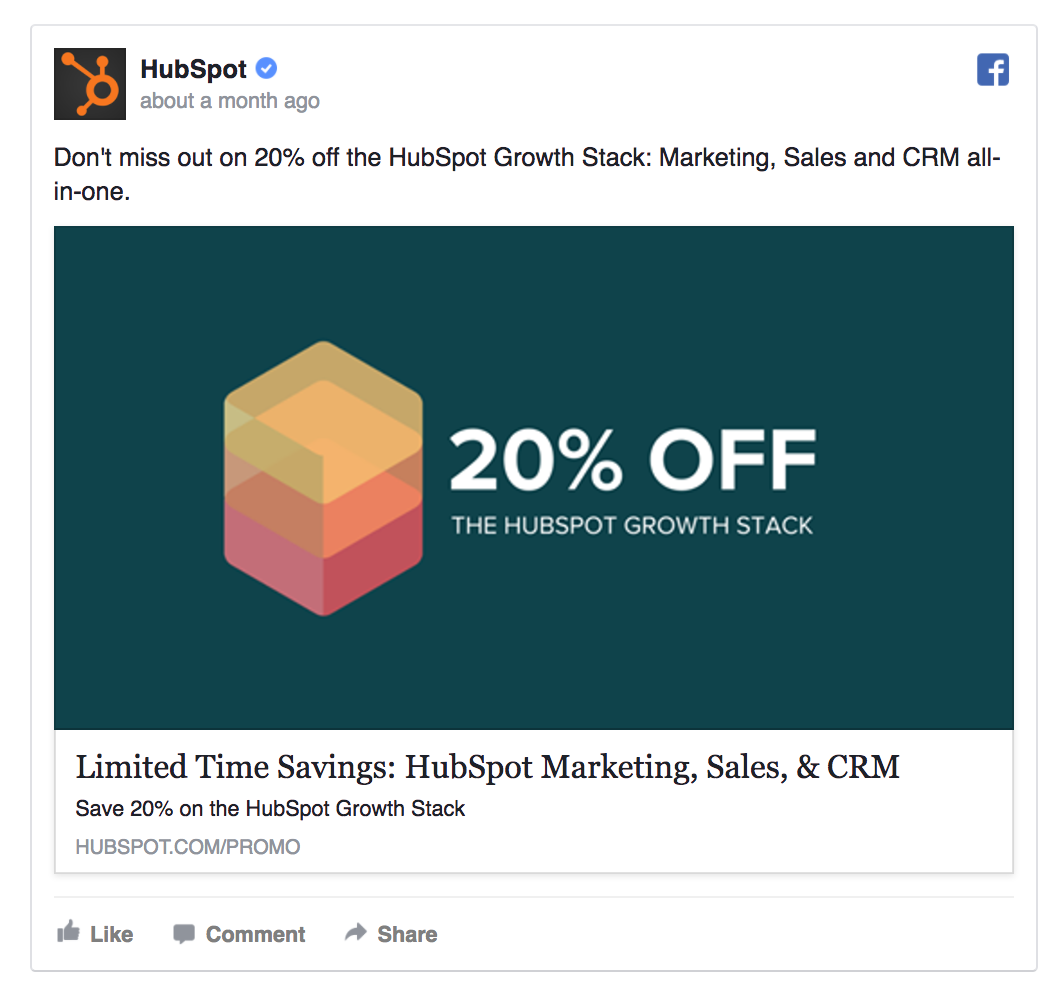
Here's another example by Groupon. This ad mixes multiple hacks together to create the ultimate click and sales magnet.

Tip: Try offering incentives, such as free shipping. Getting people to act on your limited-time offer gets even easier if you remove any potential obstacles, such as shipping costs.
When evoking a sense of urgency, make sure it's genuine. Don't tell customers they only have 24 hours if the offer will last for months. Being trustworthy is critical for conversions.
17. Experiment with CTAs
If you always use the same CTA button in your Facebook ads, it's worth experimenting with other options. Using the right CTA can increase engagement rates and affect ad quality rankings.
What's the best CTA to use with your Facebook ads? You should test your way to the answer.
For example, AdEspresso ran a test to find out whether “Learn More,” “Sign Up,” or “Download” would generate the best results. The test had a clear winner: “Download” generated the most leads by far—at about half the cost.
And using no CTA button resulted in the fewest leads at the highest cost.
Button tester extraordinaire Michael Aagaard has been testing CTAs for years. Based on his research, he has refined the process of creating a strong CTA to just two questions:
- What is my prospect's motivation for clicking this button?
- What is my prospect going to get when they click this button?
In other words, look for a CTA that matches your audience's motivation. For example, when promoting online sales, ASOS uses a “Shop Now” CTA button.
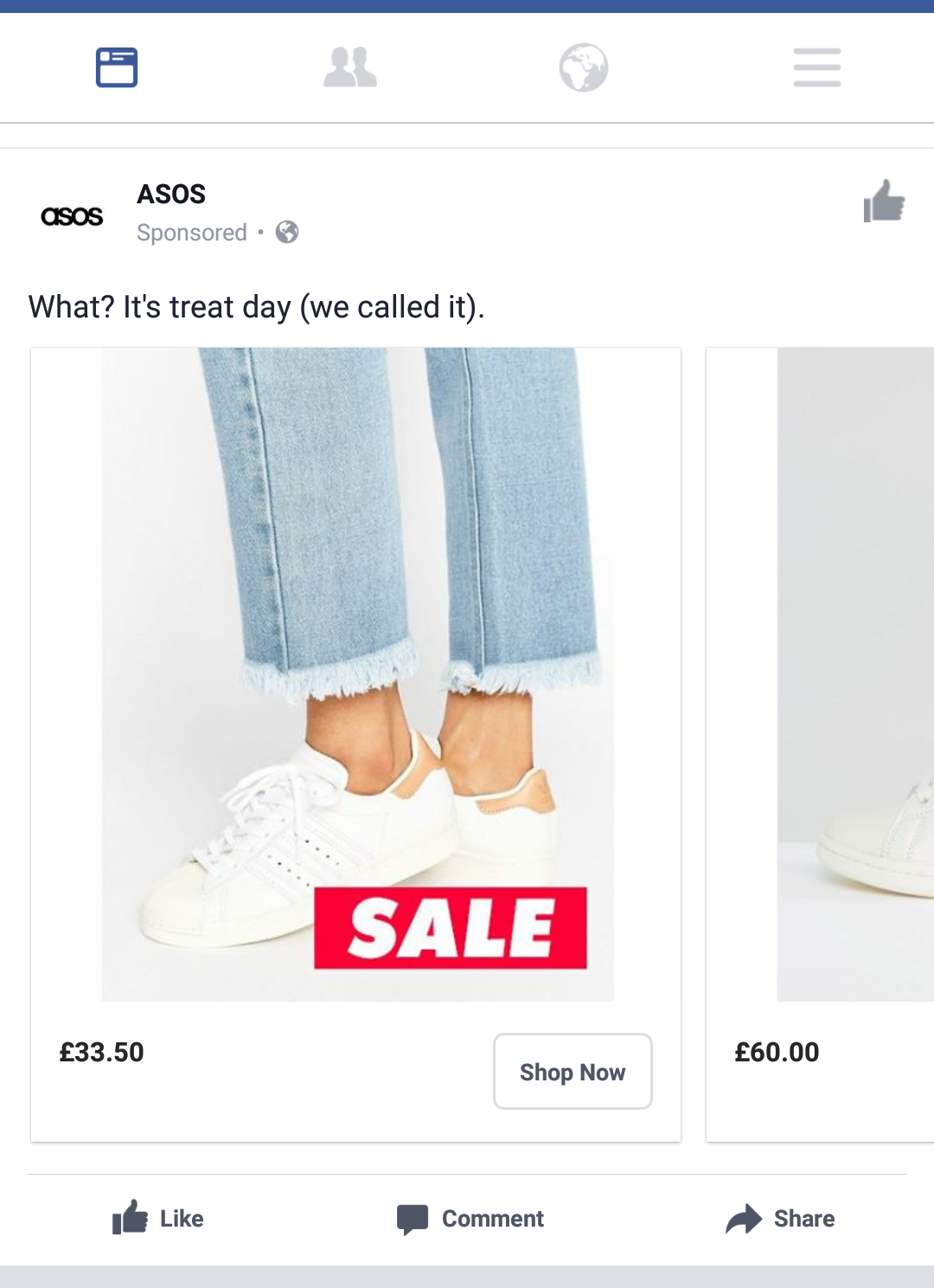
Tip: You can include CTAs in your ad copy or headline, too. Just make sure the CTA is consistent throughout the ad.
Images are arguably the most important part of your ad performance.
And by ad performance, we mean ad quality ranking.
To make your Facebook ads easier to spot in the feed, you can create highly colorful and contrasting ads like Asana.
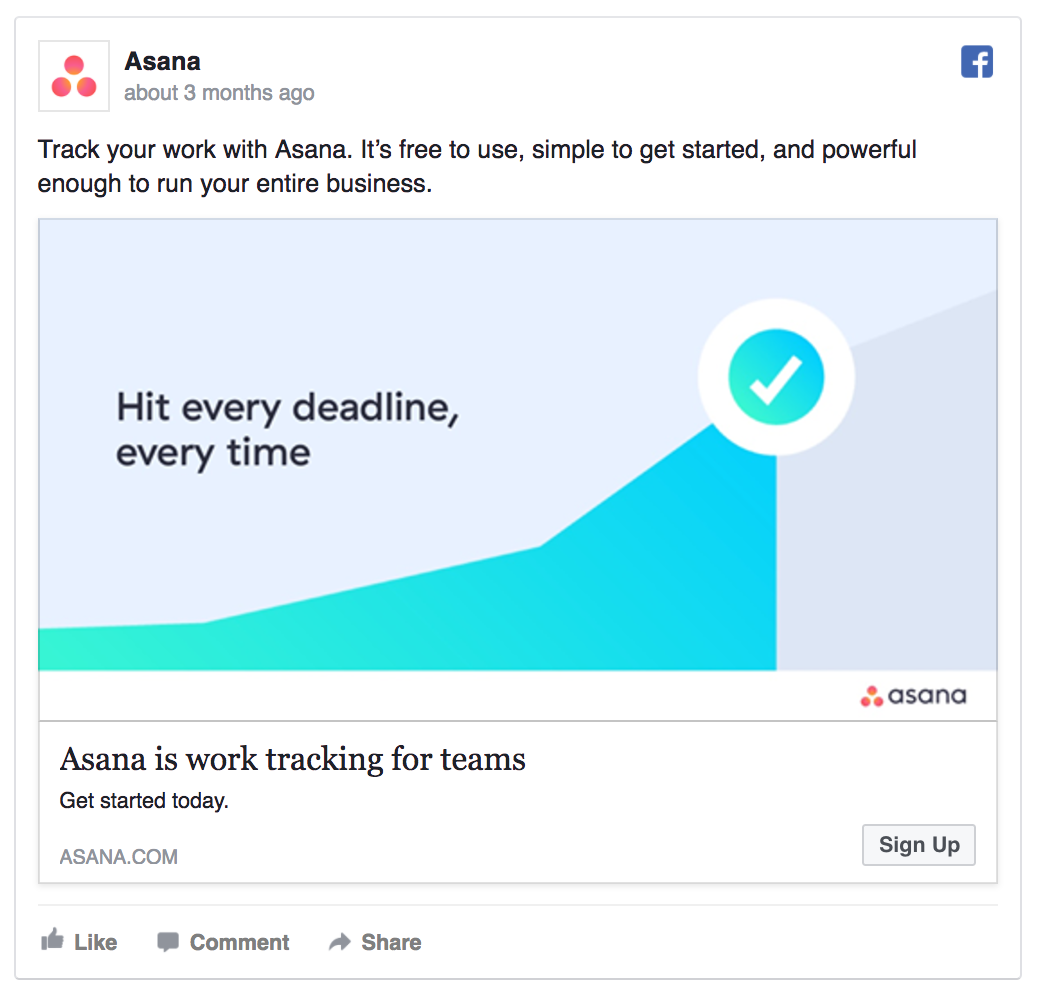
Alternatively, you can follow Udemy's approach. The online learning and teaching marketplace uses simple designs with white backgrounds to grab attention.
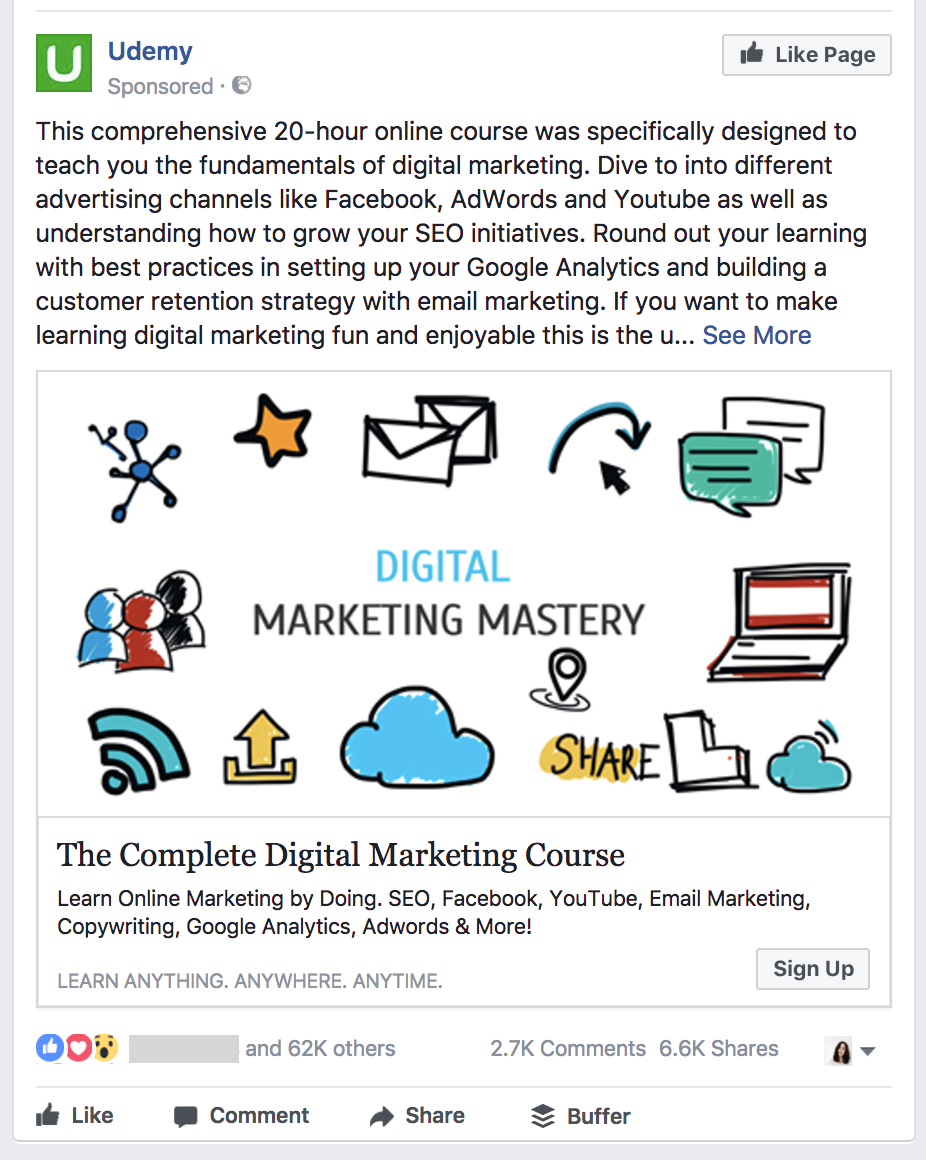
Tip: Notice how much more advertising real estate Udemy's ad takes up? That's a choice they made and something they're probably testing. You can also test longer ad copy to see whether it helps improve your ad quality ranking.
19. A/B test your way to an engaging layout
The best way to find out what your Facebook audiences like is to show them multiple ads and measure the CTRs and ad quality rankings of each variation.
When A/B testing your Facebook ad elements, follow these rules:
- Test one element at a time. Having too many iterations leads to diluted campaigns and prevents you from getting conclusive results.
- Start strong. Begin by testing the elements that you think have the highest impact on your ads' engagement rate.
- Allow enough time. Wait until your ads have generated enough traffic to provide conclusive results.
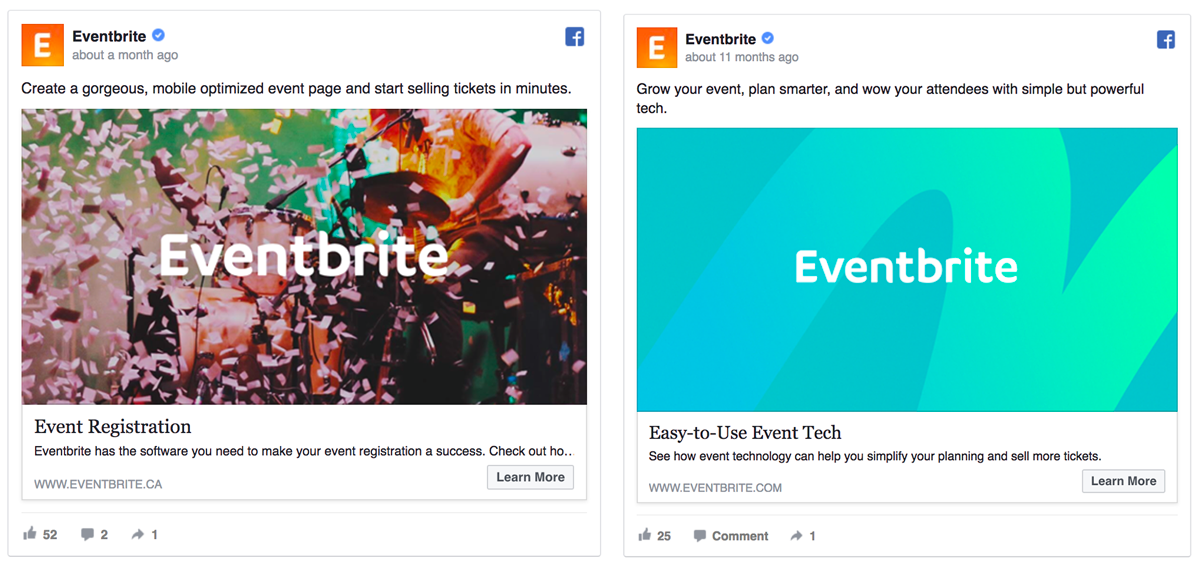
In addition to testing your ad design, copy length, and offer, you can also experiment with eliminating text boxes as Intercom has done.
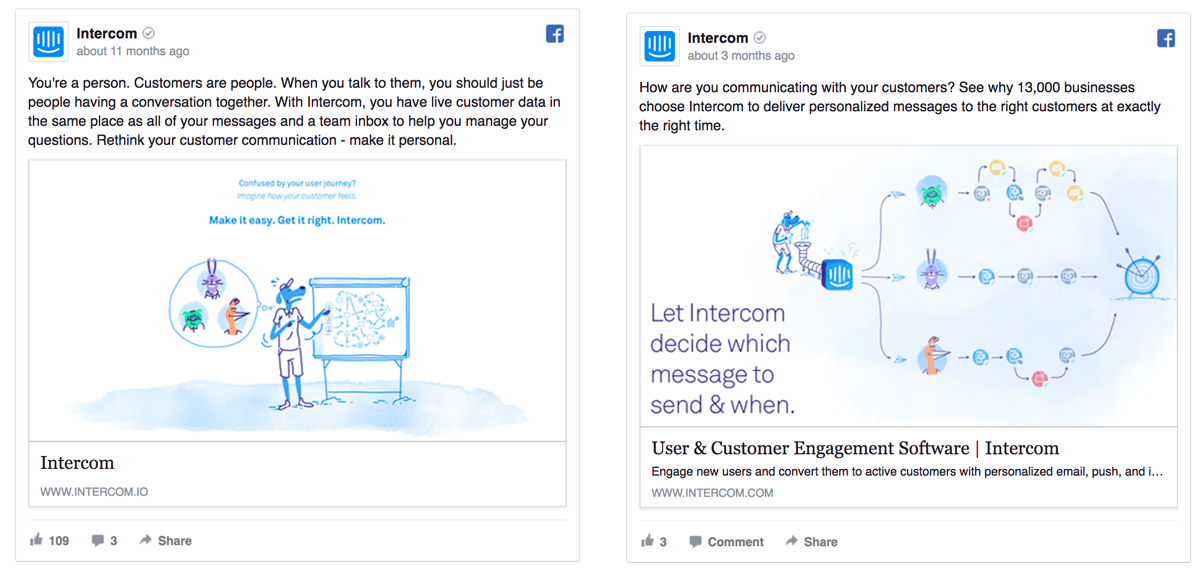
Tip: If you want valuable insights from your Facebook tests, put them through an A/B significance test to determine if your results are valid.
These tests don't directly affect your ad quality ranking, but they can have an indirect impact by improving your CTR.
If the image is one of the first things people notice about your Facebook ad, it may pay off to include your key message in the creative.
Upwork's Facebook ad delivers a compelling offer in the ad image: “End payment headaches...”
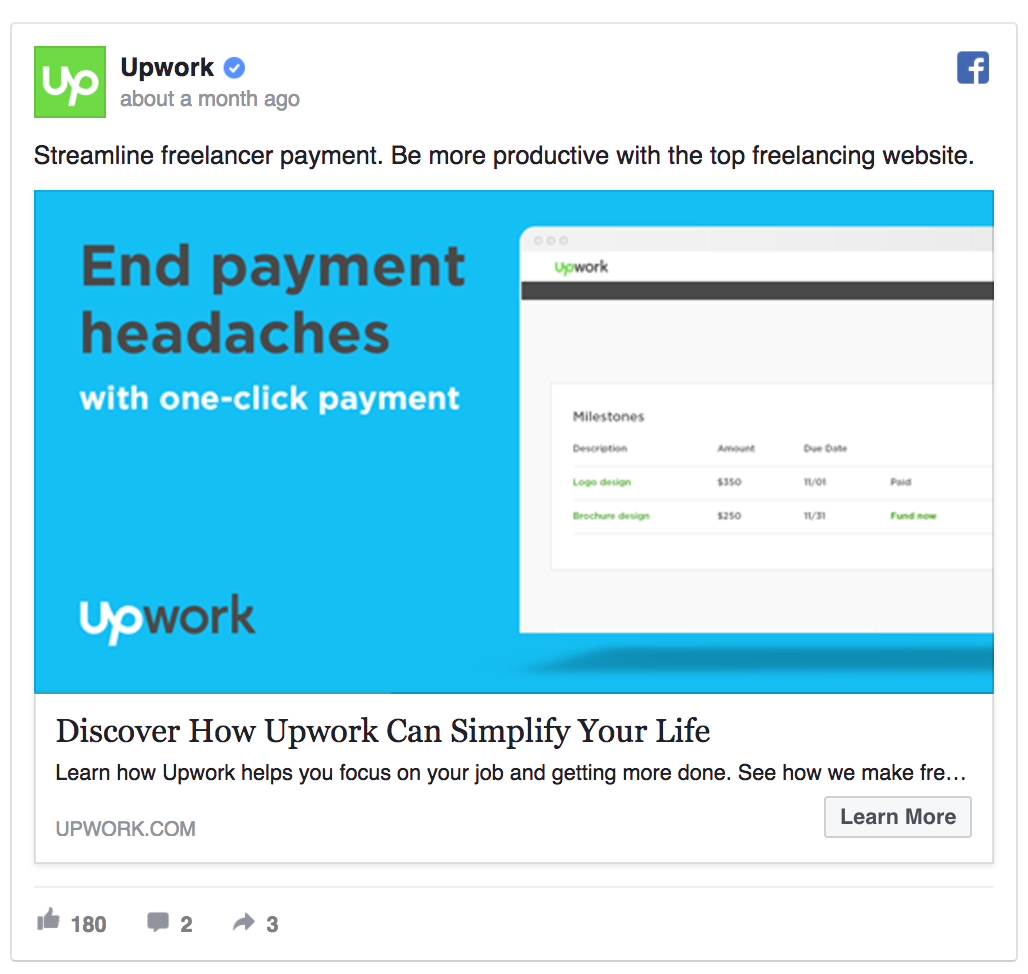
Including strong CTAs or UVPs in your image can improve engagement and your ad's perceived quality. As a result, ad quality ranking can increase and help you reach your goals more efficiently.
When setting up your campaign, you've likely noticed a wide selection of different Facebook ad types
Finding the right Facebook ad type that brings up the best in your promoted offer is one of the keys to a higher ad quality ranking.
To find the best Facebook ad type for your campaign, you could experiment with different ad types by running a split test
But before that, you should consider the best ad type for your offer.
For example, when advertising multiple products or features, you might use a carousel ad to display multiple image cards.
Here's a Facebook carousel ad example by Gusto:
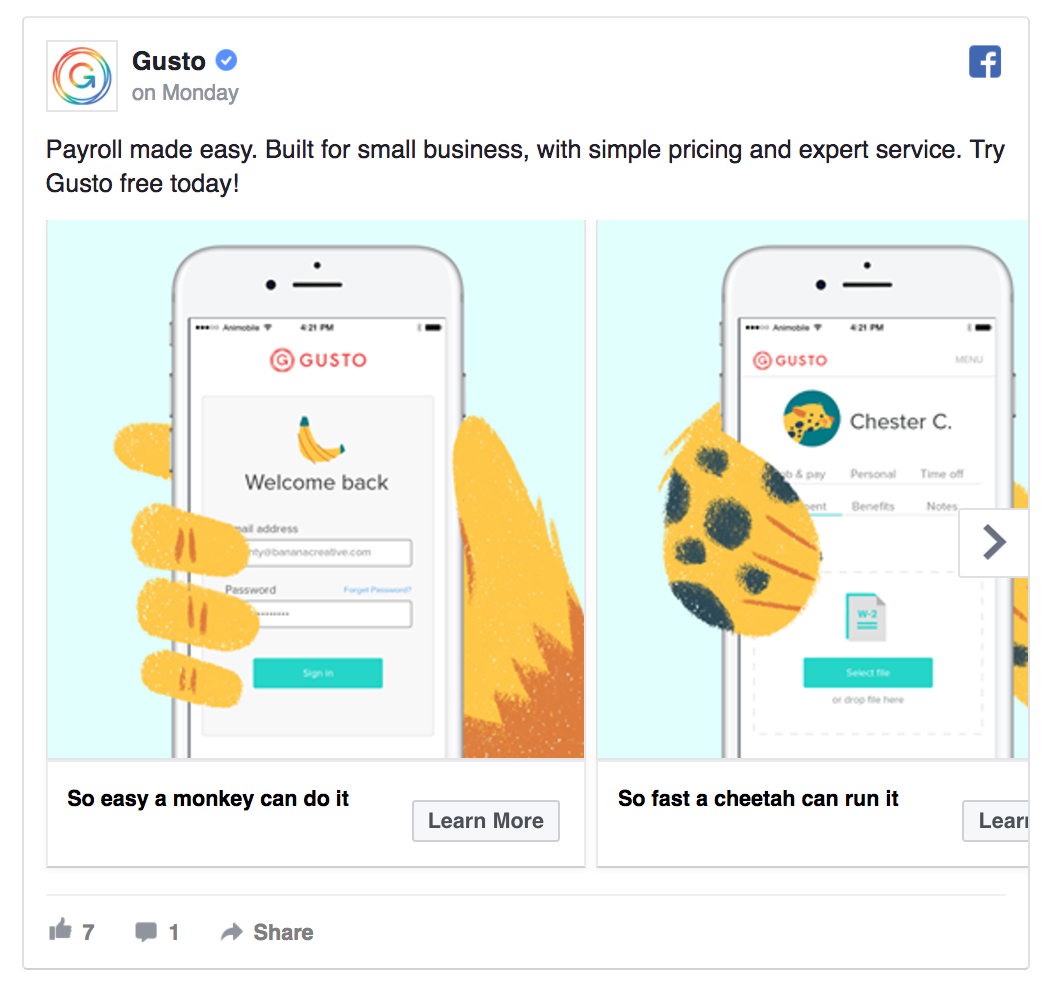
Tip: Before you create the visuals and copy for specific Facebook ad types, confirm their specific size and character limits. Check Facebook's guide for those details.
22. Create video ads instead of image ads
Video ads tend to outperform image ads in almost every respect.
In fact, it's said that Facebook video ads get up to 30% more views; on Instagram, video ads generate 38% more engagement.
Facebook partnered with Adaptly to produce a case study comparing the results of two different campaign tactics for Refinery29 (a fashion and lifestyle magazine):
- The first campaign employed creatives and images focused strictly on generating subscriptions.
- Over the same period, the other campaign featured “sequenced” ads that started with the brand story, provided product information, and then invited people to sign up at the end of the cycle.
Refinery29's landing page traffic ultimately increased by 87%, and subscription rates increased by 56% among those who saw the branding video first.
If you want to increase your Facebook ad quality ranking, try introducing video ads to your campaign mix with the goal of improving the CTRs.
Tip: Wistia also discovered that engagement drops as your video length increases
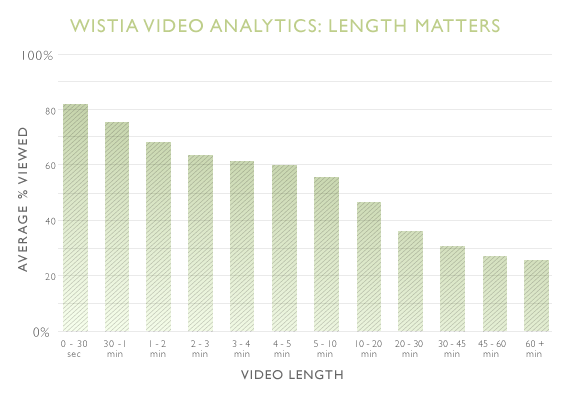
That's why we recommend keeping your Facebook video ads under 2 minutes. Also, try to make the first 30 seconds of the video so good that people will just have to watch the rest.
23. Create location-specific ads
If you're selling a product or service that's more relevant to people in specific locations, it's important to create a highly-targeted campaign.
That means using location targeting to build your audience at the ad set level.
It also means specifying locations in your ad copy and creative—from regions to cities to neighborhoods.
For example, the Jet's Pizza ad below mentions “Chicago” in the copy and “Hyde Park” in the creative to appeal to its target audience.
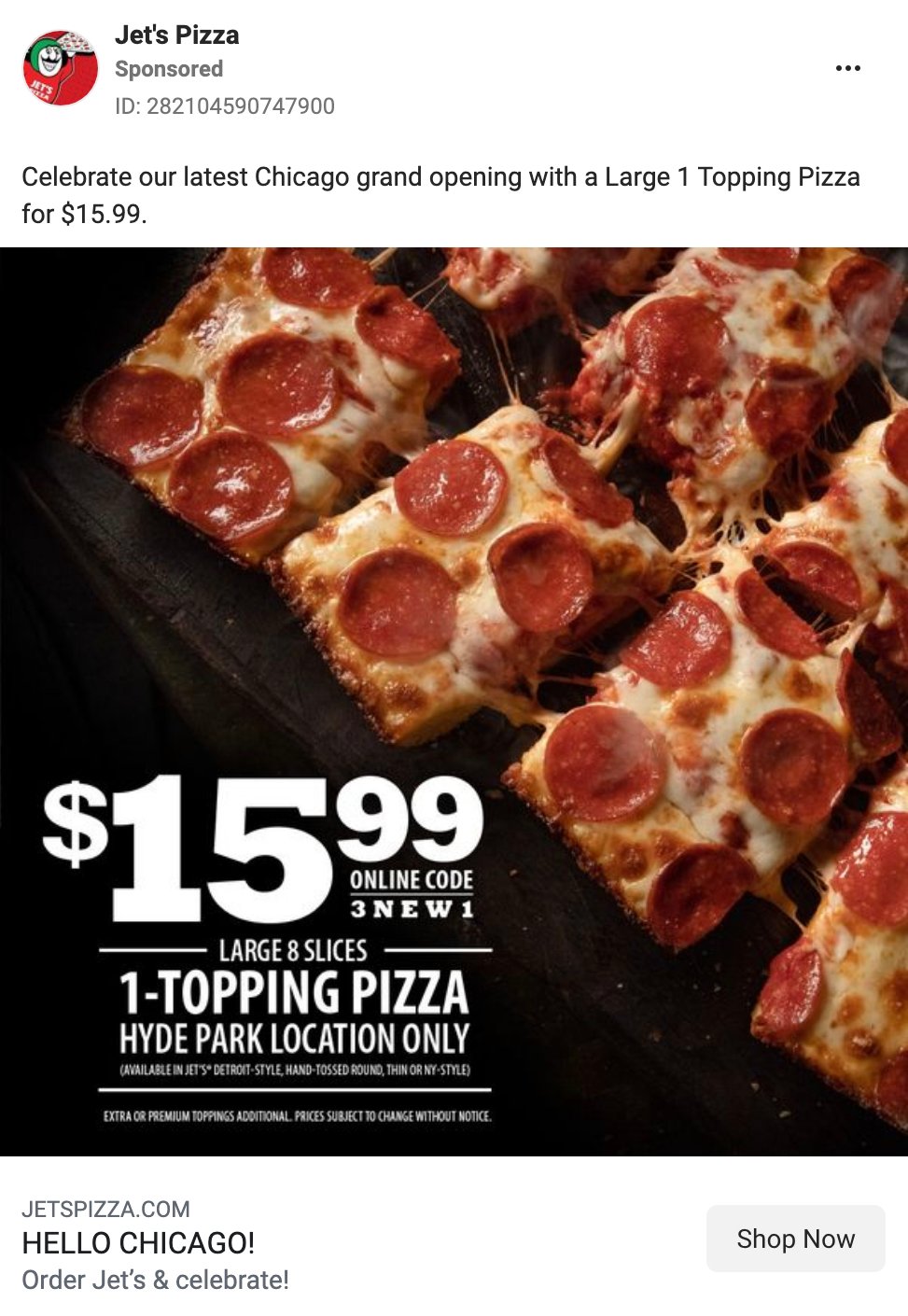
Remember that the more relevant your ad appears to your target audience, the more likely they are to engage, click through, and convert—all of which can improve your ad quality ranking.
The placements you choose can have a huge effect on ad delivery and quality ranking.
Currently, there are 22 placements across Facebook, Instagram, Messenger, and the Audience Network
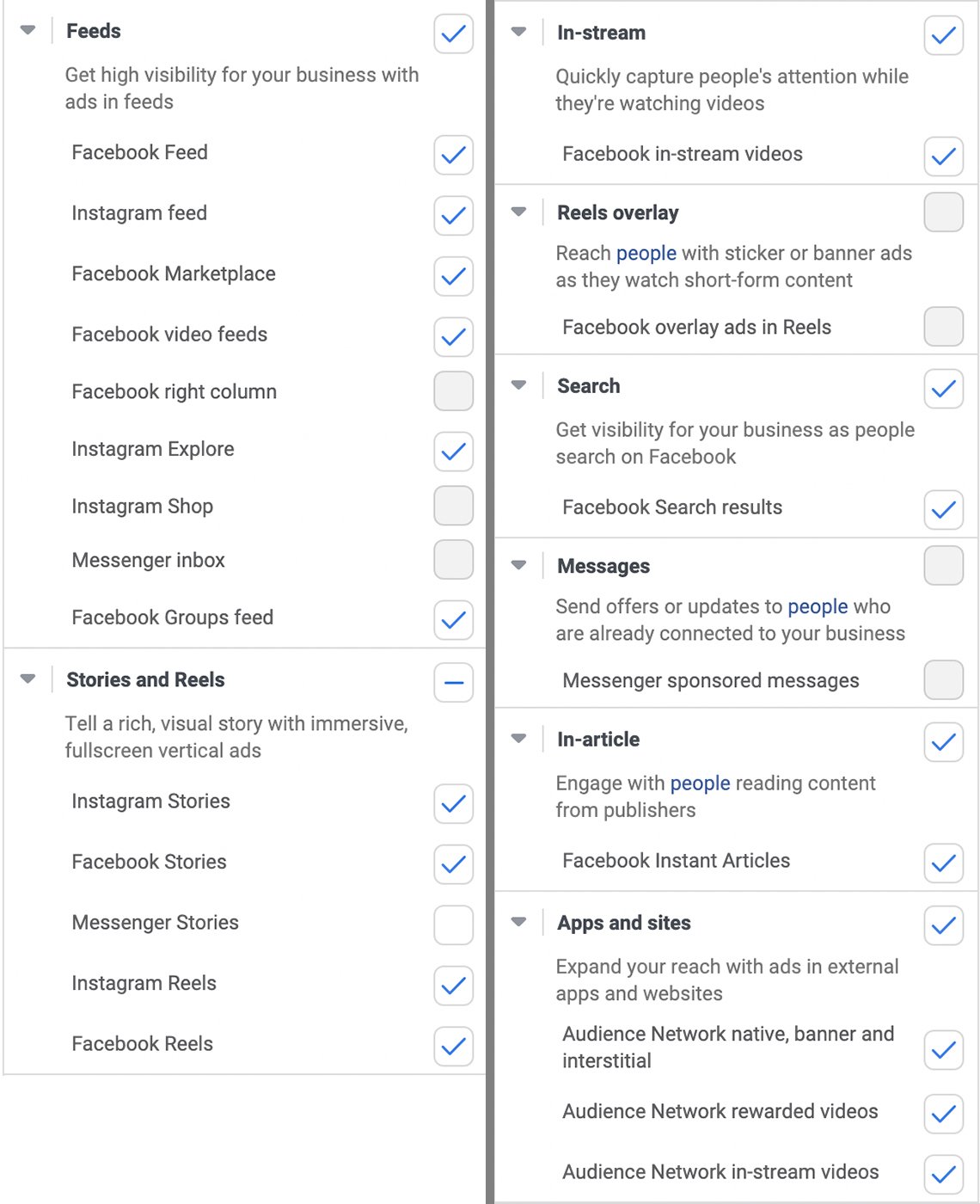
To see your top-performing ad placements, log in to Facebook Ads Manager. Use the breakdown menu to segment your campaigns by placement.
Sadly, Facebook won't reveal ad quality rankings for every placement. That means you'll need to measure ad placement performance based on other relevant metrics like CPC and CTR.

Based on your findings, you can take steps to optimize your ad campaigns. Common improvements include
- separating placements by ad set and increasing bid caps on top performers
- creating additional campaigns that target your best-performing ad placements
Keep in mind that some types of ads, designs, and offers resonate better in specific placements. For example, a free demo offer may work well in the Facebook feed but flop in Instagram stories.
It's also important to consider how the platforms and users differ between Facebook and Instagram. For example, Instagram tends to have a younger audience that may not be as receptive to a more complicated offer.
25. Uncover the best advertising time
There's a good chance that your Facebook ad offers aren't relevant to people 24/7.
For example, B2B audiences may not be interested in buying new services and tools over the weekend.
To see which weekdays contribute to the most conversions at the lowest CPA, go to your Facebook Ads Manager reports and use the breakdown menu to view your campaigns by day.
Note that Ads Manager breaks down metrics by day of the month, not day of the week. View the past 30 days and accumulate average performance for days of the week to draw conclusions.

Now you can see which weekdays resulted in the most conversions at the lowest cost.
In addition to measuring the CPA, also check your ads' CTR. Higher CTR means better engagement, which can improve your engagement rate ranking and benefit your ad quality score and conversion ranking.
Then, you can set up a custom Facebook advertising schedule by checking the “Run Ads on a Schedule” box. This option is available at the campaign or ad set level, as long as you use a lifetime budget.
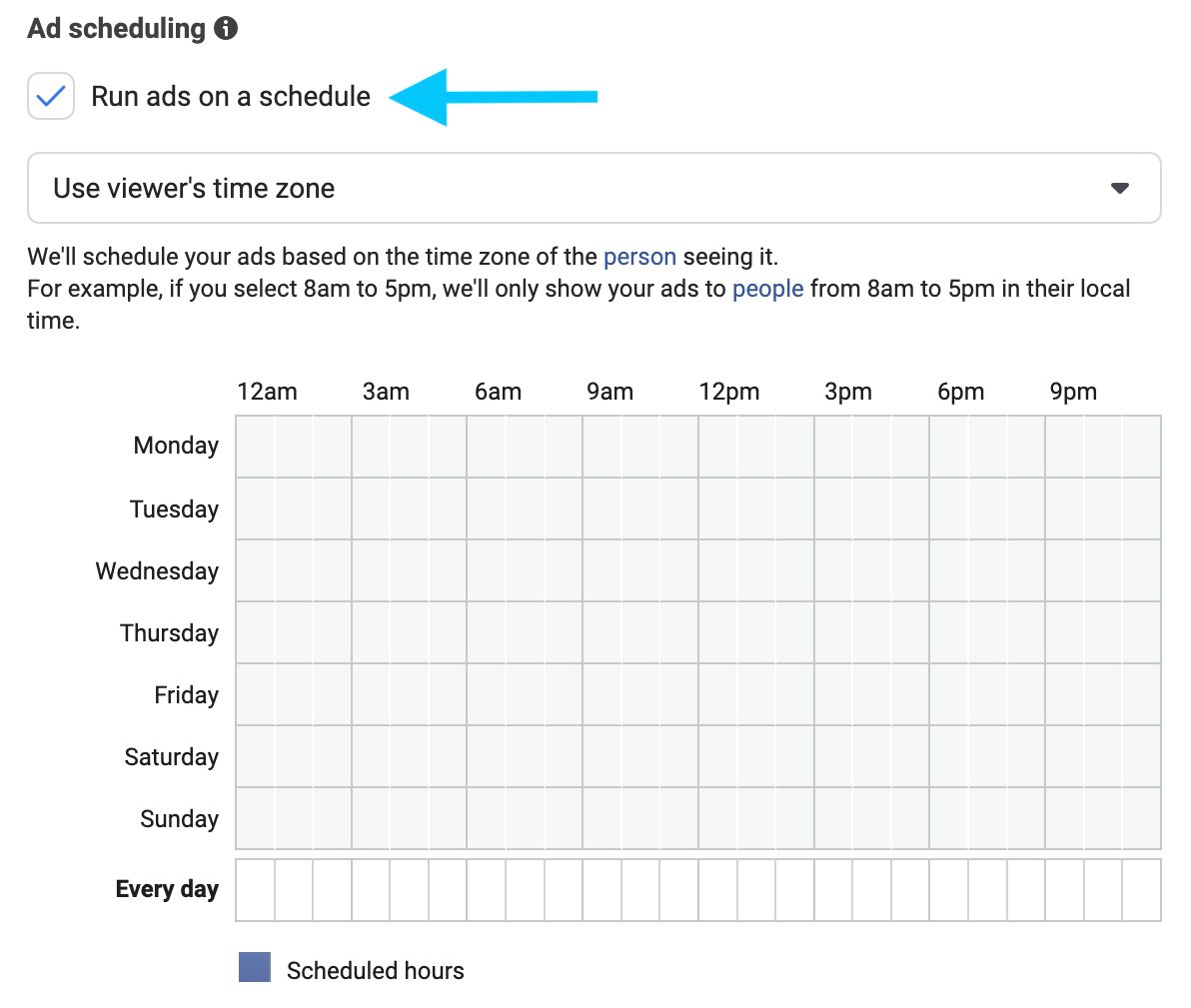
Next, you can select the weekdays and times of day you'd like your ads to be delivered.
Tip: Another benefit of using a custom delivery schedule is that people will see your ads less often and won't get bored with them as quickly.
26. Optimize for the right conversions
Conversion rate ranking is one of the key Facebook ad relevance metrics.
A high conversion rate ranking indicates that your ad's expected conversion rate is higher than competing ads using the same optimization goal and targeting the same audience.
To maximize your conversion rate ranking, it's essential to choose the right Facebook campaign objective, conversion event, and optimization goal.
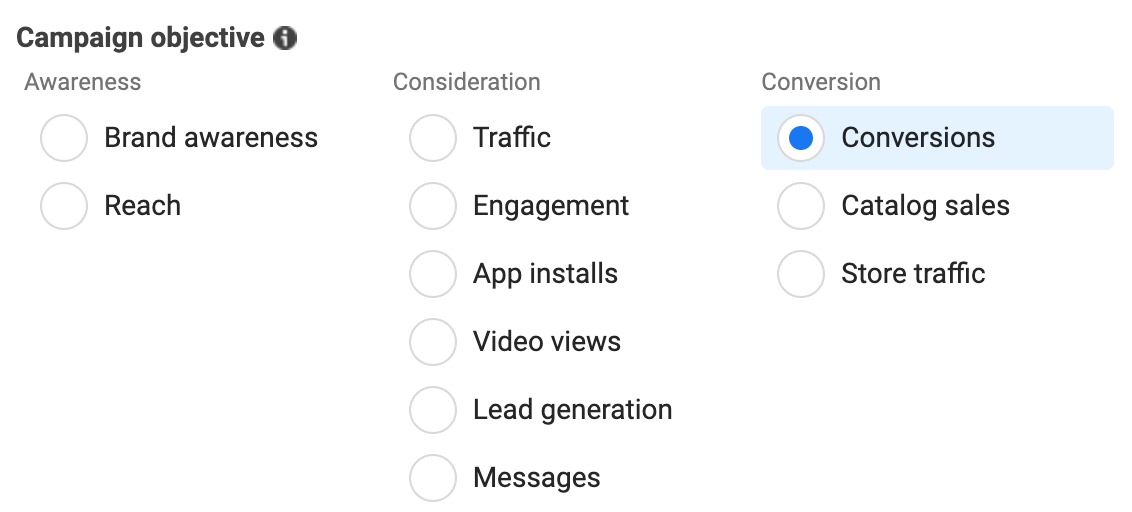
Selecting the right campaign objective helps Facebook understand what you want to accomplish and helps you get more of the desired result.
After that, you'll need to decide at the ad set level which specific conversion event you want your ad set to optimize for (prioritize).
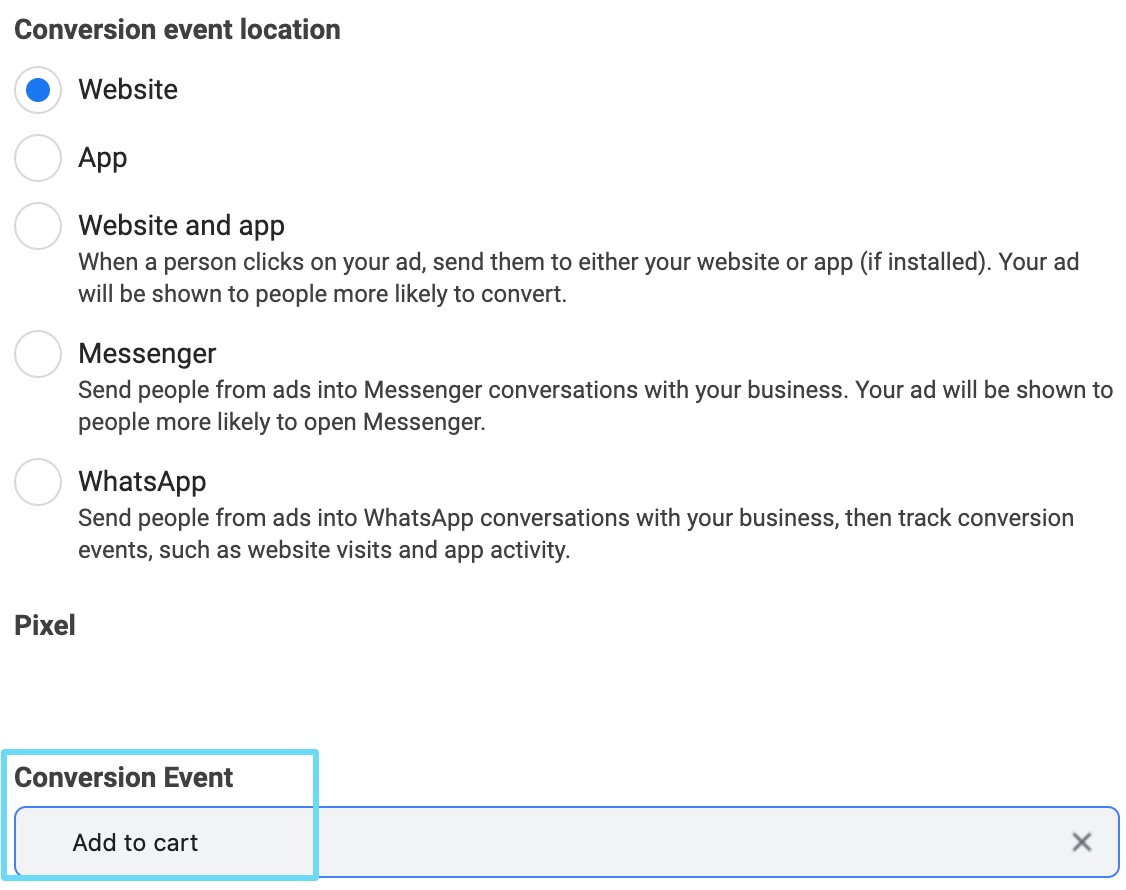
And finally, choosing the “Conversions” ad delivery optimization goal allows you to fine-tune your results. Available options depend on the objective you pick when you create a new Facebook ad.
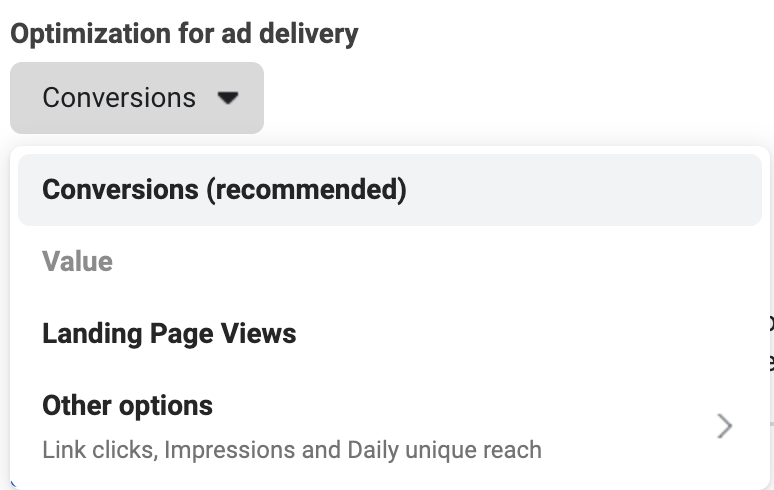
Using these tips and tools, you can increase your Facebook ad quality ranking, engagement rate ranking, and conversion rate ranking.
With these new insights, you're ready to create ads that truly resonate with your audience and drive the results you want.
Looking for more helpful lists and guides to point you in the right direction? Check out our roundup of Facebook ads resources and find everything you need to set up a successful campaign.
Understanding Facebook’s Relevance Score
Before Facebook introduced the Ad Quality Ranking system, advertisers relied on the Relevance Score to gauge how well their ads resonated with their target audience. The Relevance Score was a rating from 1 to 10, with higher scores indicating better ad performance. This score was calculated based on positive indicators such as engagement, clicks, and conversions, as well as negative indicators like hiding posts and lack of interaction.
Understanding the Relevance Score can still provide valuable insights into improving ad performance. For instance, ads that received higher Relevance Scores typically enjoyed lower costs per click and higher click-through rates. This historical perspective can help advertisers focus on creating ads that generate positive engagement and minimize negative feedback, ultimately improving their ad quality ranking.
Introducing New Strategies
To stay ahead in the competitive landscape of Facebook advertising, it’s essential to continually introduce new strategies that cater to your target audience’s evolving needs and preferences. This can involve creating fresh ad copy, images, and videos that resonate with your audience. Experimenting with different ad formats, such as carousel ads or collection ads, can also help increase engagement and conversion rates.
For example, if your current ad strategy involves static images, consider testing video ads or interactive formats like carousel ads. These formats can provide a more engaging experience for users, potentially leading to higher engagement rates and improved ad quality rankings. By regularly updating your strategies, you can ensure your ads remain relevant and appealing compared to other ads competing for the same audience.
Optimizing Audience Targeting
Optimizing audience targeting is crucial for improving your Facebook ad performance. By focusing on creating targeted audiences that are highly relevant to your product or service, you can increase your ad’s expected conversion rate and overall quality ranking. Facebook offers a range of advanced targeting features, such as lookalike audiences and custom audiences, which can help you reach your ideal audience more effectively.
For instance, lookalike audiences allow you to target users who share similar characteristics with your existing customers, increasing the likelihood of engagement and conversions. Custom audiences enable you to retarget users who have already interacted with your brand, ensuring your ads are shown to people who are more likely to respond positively. By leveraging these advertising features, you can optimize your audience targeting and improve your ad quality ranking.
Enhancing Ad Creative and Copy
Creating high-quality ad creative and compelling copy is essential for capturing your audience’s attention and improving ad performance. Your visuals should be eye-catching and relevant, while your ad copy should be clear, concise, and tailored to your target audience’s interests and needs.
Facebook’s Ads Manager provides several tools to help you enhance your ad creative and copy. For example, A/B testing allows you to experiment with different versions of your ads to see which ones perform best. Ad preview features let you see how your ads will appear across different placements, ensuring they look great everywhere they’re shown. By focusing on high-quality creative and copy, you can improve your ad’s perceived quality and increase engagement rates.
Ad Layout and Format
The layout and format of your ads can significantly impact their performance. Experimenting with different ad formats, such as image ads, video ads, and carousel ads, can help you find the best-performing format for your target audience. Additionally, optimizing the ad layout to include clear and concise copy, eye-catching images, and prominent calls-to-action can improve engagement and conversion rates.
For example, carousel ads allow you to showcase multiple products or features within a single ad, providing a more interactive experience for users. Video ads can convey your message more dynamically and are often more engaging than static images. By optimizing your ad layout and format, you can improve your ad’s perceived quality and increase its expected conversion rate.
Scheduling and Optimization
Effective scheduling and optimization are critical for maximizing your ad performance. By scheduling your ads to run during times when your target audience is most active and engaged, you can increase the likelihood of positive interactions. Additionally, managing ad frequency to avoid ad fatigue is essential for maintaining high engagement rates and conversion rates.
Facebook’s Ads Manager offers several tools to help you optimize your ad scheduling and frequency. For instance, ad rotation and ad scheduling features allow you to control when your ads are shown, ensuring they reach your audience at the right times. By optimizing your ad scheduling and frequency, you can improve your ad’s perceived quality and increase its expected conversion rate, ultimately boosting your ad quality ranking.
